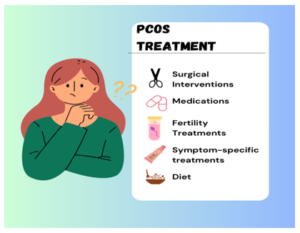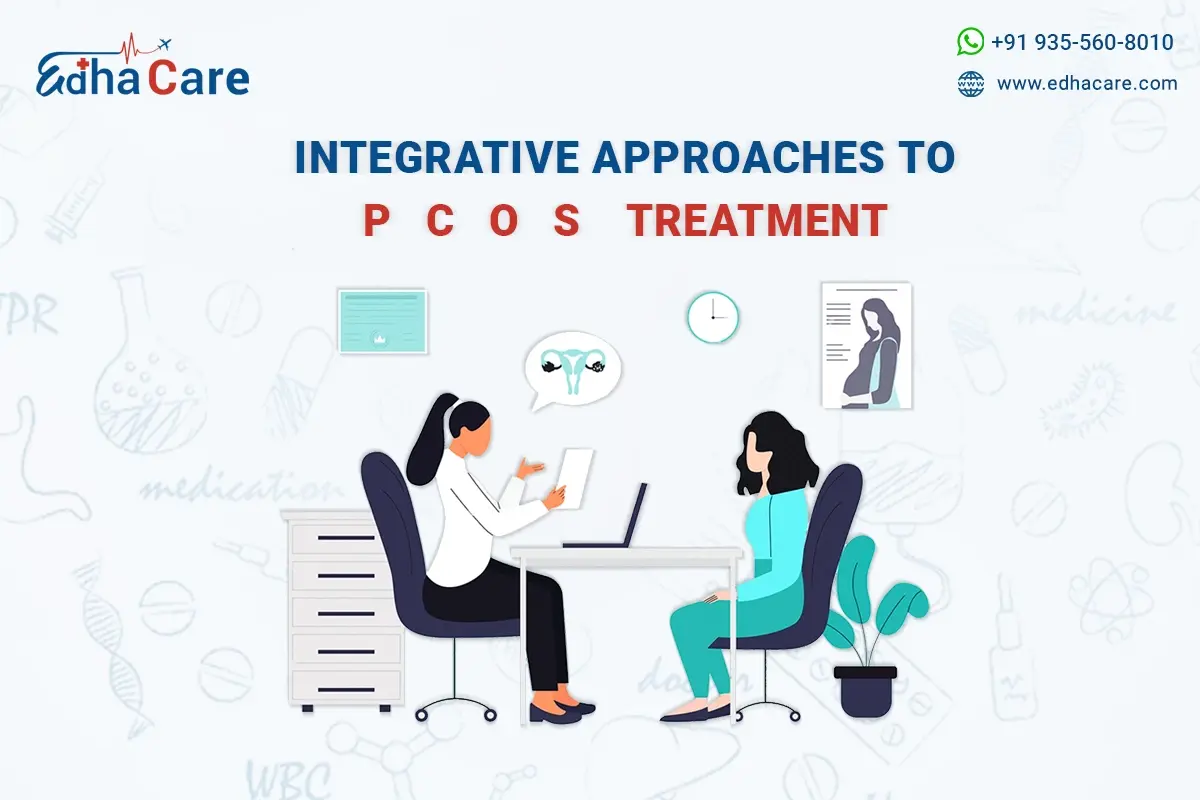The endocrine condition polycystic ovarian syndrome (PCOS), which affects many women, has a variety of symptoms and consequences. For all reproductive age groups, it has an incidence of 8–13%, which has been known for decades. Currently, the patient’s main complaint is the focus of most therapies. Reducing symptoms of hyperandrogenism, reestablishing menstrual regularity, and obtaining pregnancy are the main goals of treatment. A good, balanced diet combined with regular exercise can raise metabolism, promote insulin sensitivity, and help weight loss safely, therefore it should be a top priority for women with PCOS. They will feel better physically as a result.
Prevalence of PCOS
Between 4% and 20% of people worldwide are believed to have PCOS. According to data from the World Health Organization (WHO), PCOS may affect as many as 116 million women worldwide (3.4%). The prevalence of PCOS will range from 2.2 to 48% globally in 2020. Between 5% and 10% of women in various nations who are of reproductive age have PCOS, according to earlier studies. With an average frequency of 276 instances per 100 000 people in Europe, the prevalence of PCOS ranges from 5 to 18% globally.
Risk Factors of PCOS
While the exact cause of PCOS is unknown, there are numerous recognized risk factors that can accelerate the likelihood of developing the syndrome. These risk factors include:
-
Insulin resistance: When the body’s cells respond less favorably to insulin, greater blood levels of insulin result. This is known as insulin resistance. Insulin resistance is closely linked to PCOS and may be a cause of hormonal imbalances as well as the emergence of other symptoms.
-
Hormonal imbalance: PCOS is characterized by hormonal imbalances, mainly elevated levels of androgens such as testosterone. This imbalance can interfere with normal ovarian function and lead to the development of cysts.
-
Family history: There appears to be a genetic component to PCOS, as the condition tends to run in families. Having a close relative with PCOS surges the risk of developing the syndrome.
-
Obesity: Being overweight or obese is linked with an increased risk of developing PCOS. Excess weight can exacerbate insulin resistance and hormone imbalances, leading to the development and severity of PCOS symptoms.
-
Sedentary lifestyle: Lack of physical activity and a sedentary lifestyle are related to an increased risk of PCOS. Additionally, regular exercise has been shown to improve insulin sensitivity and help manage PCOS symptoms.
Diagnosis
A diagnosis of PCOS can generally be made if other rare causes of the same symptoms have been ruled out and one meets at least two of the following three criteria:
- irregular periods or infrequent periods
- blood tests showing high levels of “male hormones”, such as testosterone
- scans showing polycystic ovaries
Above are the diagnostic points that are considered for the correct assessment of PCOS.
Management of PCOS
Regardless of the PCOS diagnosis, therapy for comorbidities associated with PCOS such as obesity, type 2 diabetes, and any health problems related to metabolic syndrome and mental health problems should be treated according to currently accepted guidelines. The International PCOS guideline established recommendations for treating irregular periods, hirsutism, and anovulation as PCOS-related symptoms that are essential to diagnosis. Drug treatment is advisable only as second-line therapy after lifestyle modification because hyperinsulinemia promotes hyperandrogenism.
In comparison to COC therapy, metformin-alone therapy only has mild to moderate effects on cycle regularity and hyperandrogenism. The new recommendation, however, supports the use of metformin in combination with COCs as a novel strategy, particularly in PCOS-positive overweight or obese women. Teenagers are also covered by this advice. Due to a dearth of high-quality research, the data on antiandrogen drugs were scarce, and the data that was already available did not demonstrate antiandrogens’ significant benefits when paired with COCs. This was also supported by a recent placebo-controlled randomized controlled trial, which found that adding the androgen receptor antagonist bicalutamide to COC medication for a year had only a marginally positive effect. When treating women of reproductive age in therapeutic settings, the potential for male children to become virilized in the event of pregnancy.

Surgical Interventions
Surgery can occasionally help with PCOS-related symptoms. After all other treatment options have failed, bariatric surgery is an excellent treatment for obesity and PCOS symptoms and should be made available to individuals who are extremely obese (100). The hazards, however, include nutritional and surgical issues, and pregnancy should be avoided for a full year after the operation.
Laparoscopic ovarian drilling is a process wherein ovarian tissue is destroyed with a laser beam or with a surgical needle using minimally invasive laparoscopic techniques, to rebalance and enhance ovarian function in PCOS. The process is not commonly used, but it has remained as an effective option in cases of clomiphene citrate–resistant ovaries and when letrozole is not an option because of off-label use.
Although, by minimizing the number of multiple pregnancies and the higher risk for ovarian hyperstimulation syndrome, laparoscopic ovarian drilling may decrease the live birth rate in women with anovulatory PCOS and clomiphene citrate resistance. One should also bear in mind that laparoscopic ovarian drilling also subjects women to the risks associated with surgery, such as complications from anesthesia, infection, and adhesions.
Medications
Several medications are available currently to reduce the symptoms of PCOS or to prevent the further consequences of PCOS.
1. Metformin
Metformin is among the primary treatments to target insulin resistance if one has prediabetes or diabetes, which includes because of PCOS. The advice is controversial, but some physicians believe that PCOS always requires metformin.
2. Spironolactone
This drug was originally manufactured as a blood pressure medication and diuretic for hormonal forms of high blood pressure (hypertension) and fluid retention. This medication is often prescribed in combination with hormonal birth control pills, but can also be used alone
3. Hormonal Birth Control Pills
Combination birth control pills — those with estrogen and progesterone or progestin — are frequently prescribed to women with PCOS not looking to get pregnant. If the main concern is irregular periods and the resulting potential health risks, this is a great option.
4. Finasteride
Finasteride, which is another androgen blocker, is sometimes prescribed to address excess body and facial hair growth in women with PCOS. Like spironolactone, this medicine is not safe for women who may become pregnant, as it might affect the fetus.
Fertility treatments:
1. Ovulation induction: Medications such as clomiphene citrate or letrozole can stimulate ovulation in women trying to conceive.
2. In vitro fertilization (IVF): This technique includes fertilizing eggs with sperm outside the body and then transferring the embryos into the uterus. IVF may be highly recommended for couples who are experiencing infertility because of
Symptom-specific treatments:
1. Acne treatment: Topical or oral medications, such as antibiotics, retinoids, or hormonal therapies, may be used to manage acne.
2. Excessive hair growth (hirsutism): Hair removal methods like shaving, waxing, threading, and laser hair removal can be employed. Medications like oral contraceptives or anti-androgens may also help.
3. Irregular menstrual cycles: Hormonal therapy or medications like progestins can help regulate menstrual periods.
Diet:
According to Medling, the condition also includes persistent, low-grade inflammation as a third component in addition to hormonal dysregulation and insulin resistance. (5) Adopt an anti-inflammatory eating plan that includes nutrient- and fiber-rich fruits and vegetables with low glycemic indexes (such as apples and berries), grass-fed meats, organic poultry, and sources of omega-3s (such as chia seeds and fatty fish), while avoiding inflammatory, highly processed foods like french fries, potato chips, cake, and cookies.

-
High-fiber foods: Fiber-rich foods help regulate blood sugar levels and improve insulin sensitivity. Good sources of fiber include fruits, vegetables, legumes, and whole grains.
-
Consume lean proteins: Lean proteins are important for maintaining stable blood sugar levels and promoting satiety. Include sources like skinless chicken or turkey, fish, legumes, and tofu in your diet.
-
Focus on healthy fats: Sources such as healthy fats, such as avocados, nuts, seeds, and olive oil. These fats help regulate hormones and promote a feeling of fullness.
-
Balanced meals: Aim for balanced meals that include a combination of carbohydrates, proteins, and healthy fats. This can help maintain steady blood sugar levels and prevent overeating.
-
Stay hydrated: Drink an adequate amount of water throughout the day to stay hydrated. Water can help maintain optimal body functions and support overall health.
Key Takeaway
The prevalence of PCOS is rising and the rate is quite high in India. Several treatment procedures are associated with PCOS and some of the treatments are effective. There remain several challenges in the management of PCOS. A high prevalence of obesity is a significant contributor to morbidity. Treatment types in terms of diet, different kinds of medications, surgical interventions, fertility treatments, and many others have led to the prevention of PCOS or reducing the symptoms of the same. Although the benefits of metformin are limited, it may be helpful for metabolic disorders and for weight control even in adolescents when used in conjunction with oral contraceptives, which remain the first choice for the treatment of hyperandrogenism and irregular periods.

